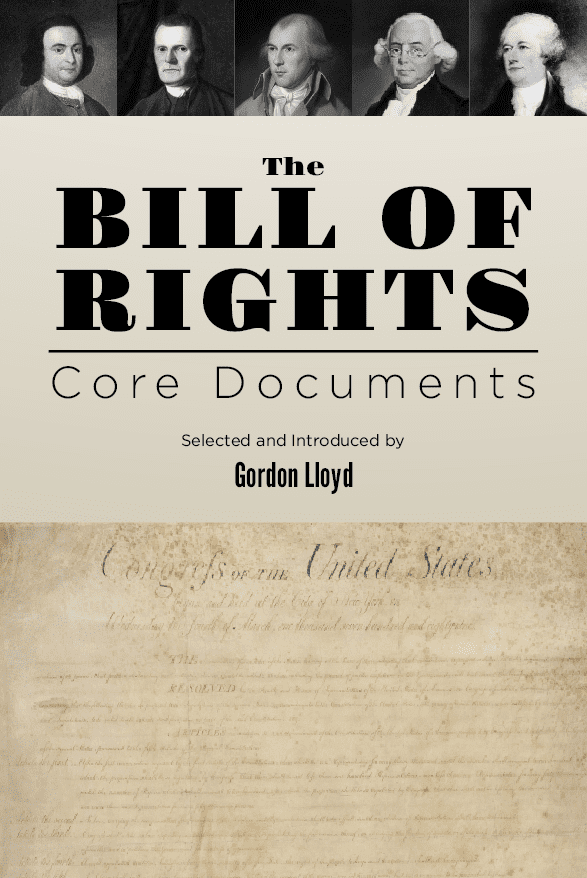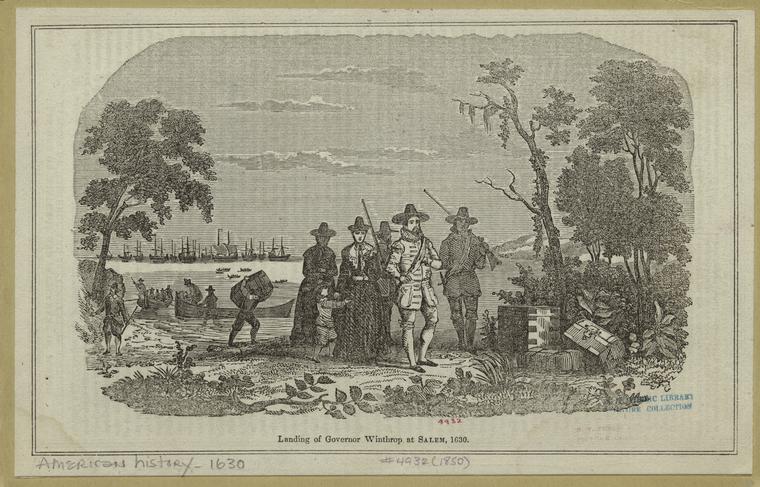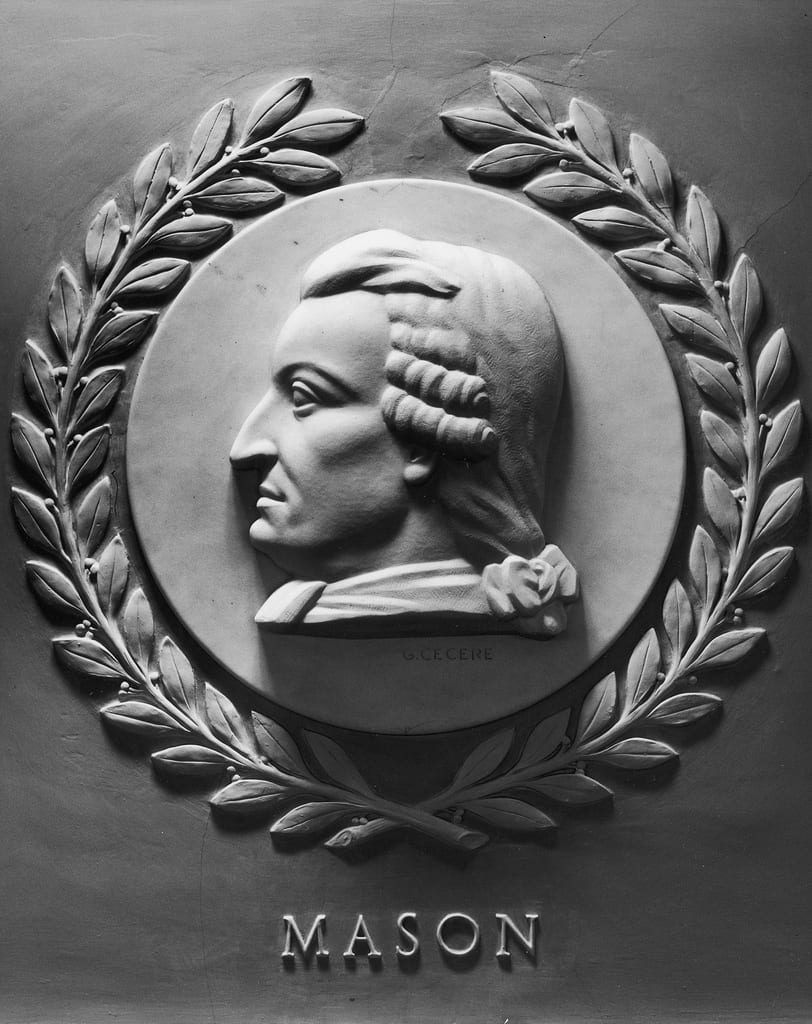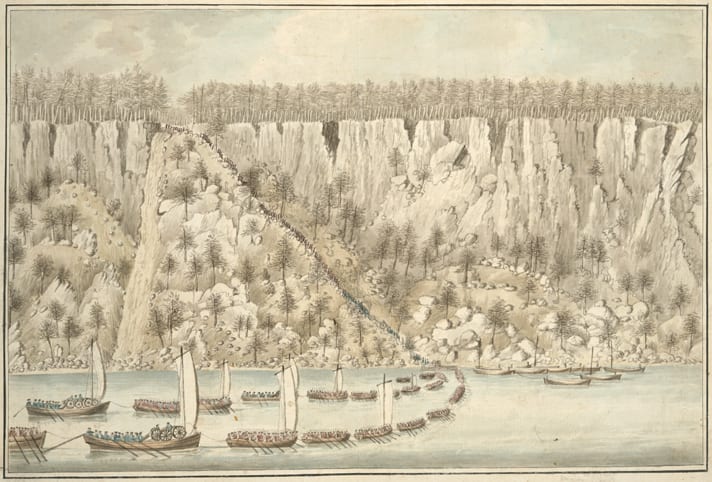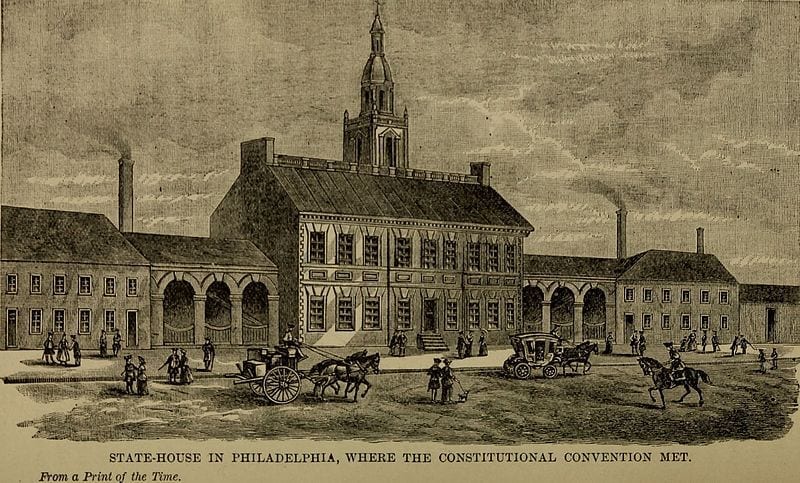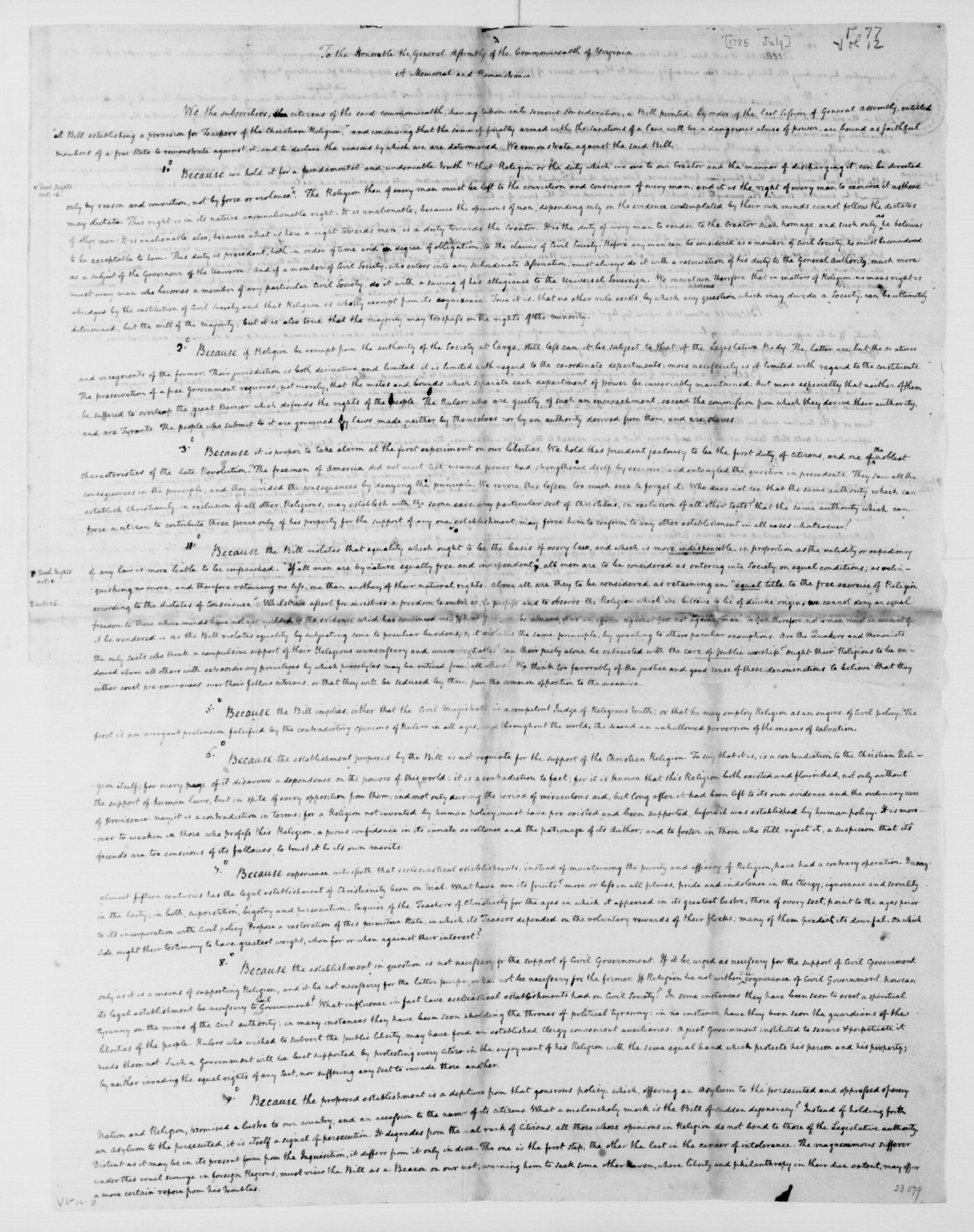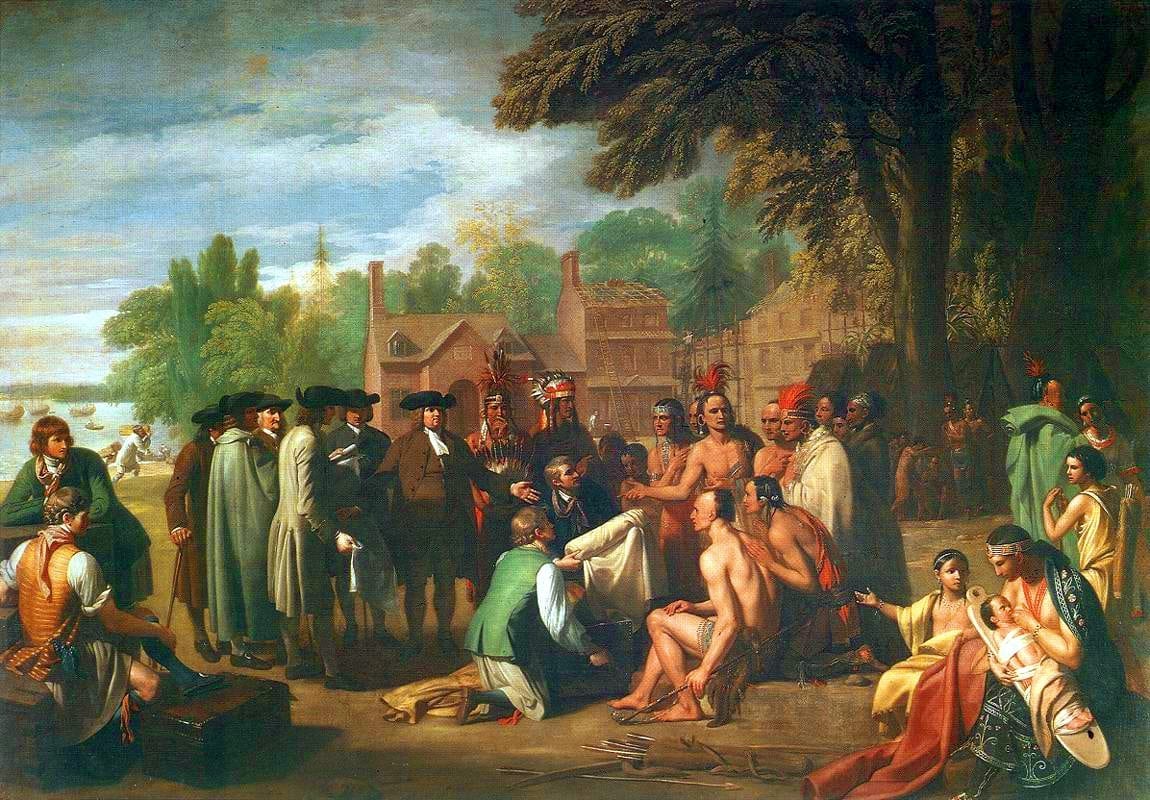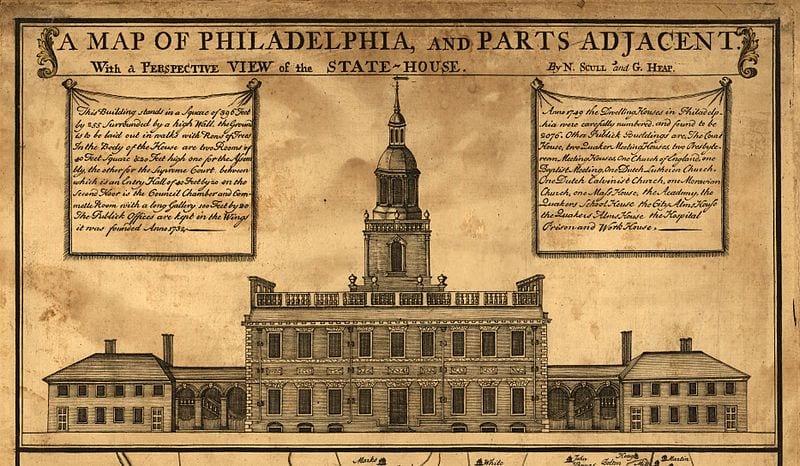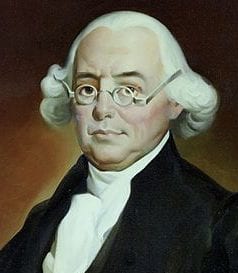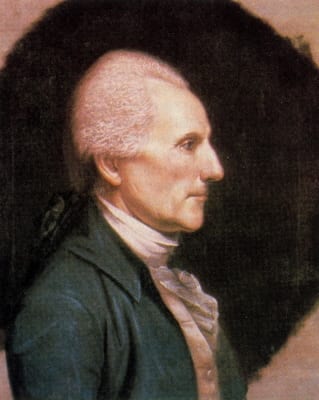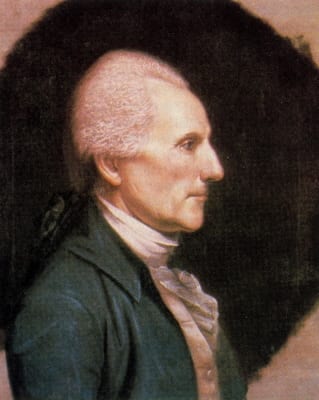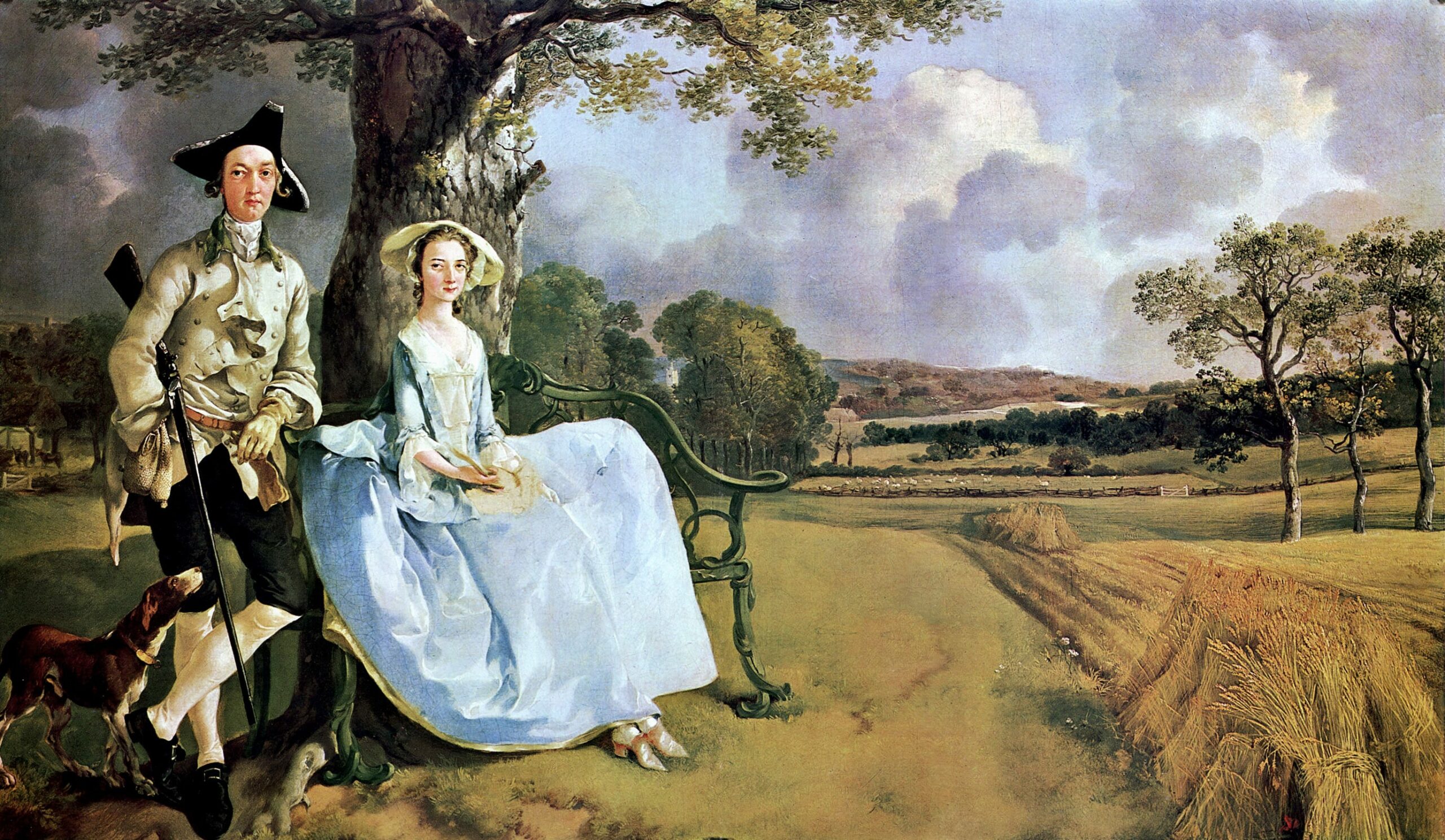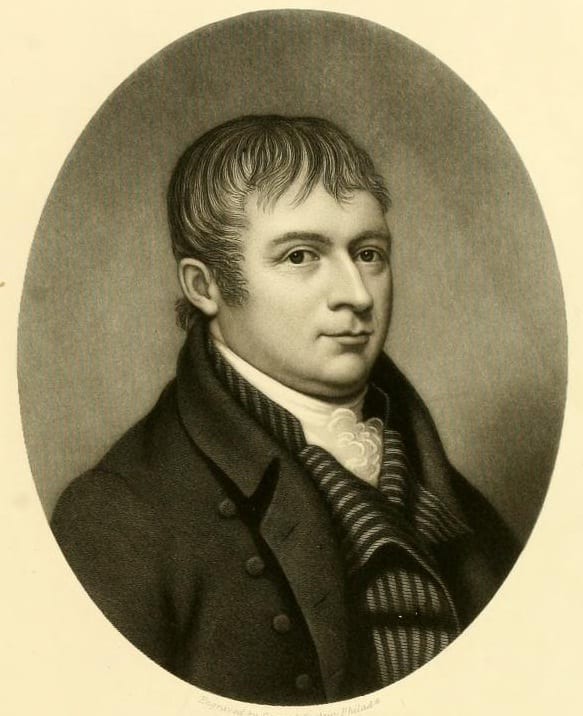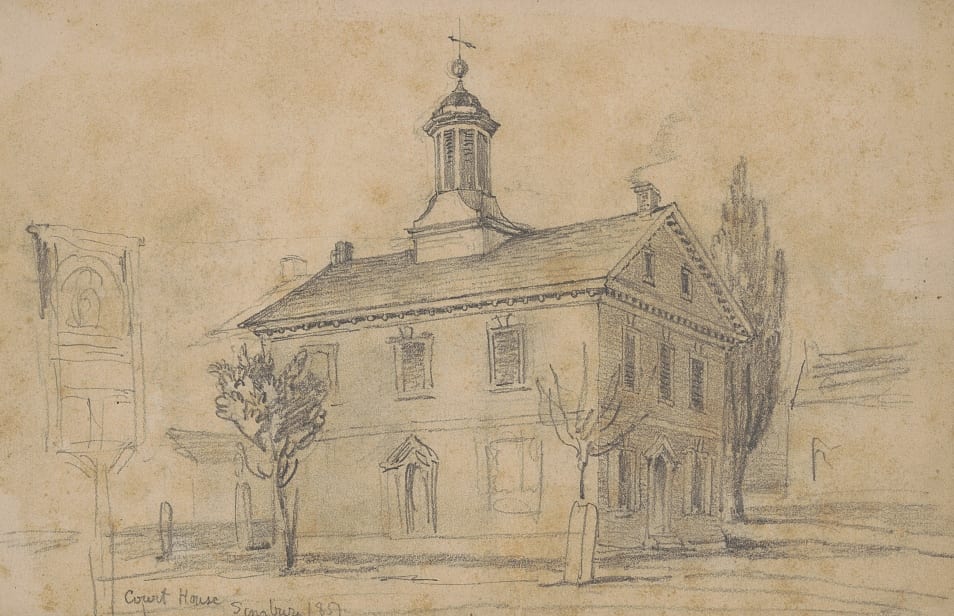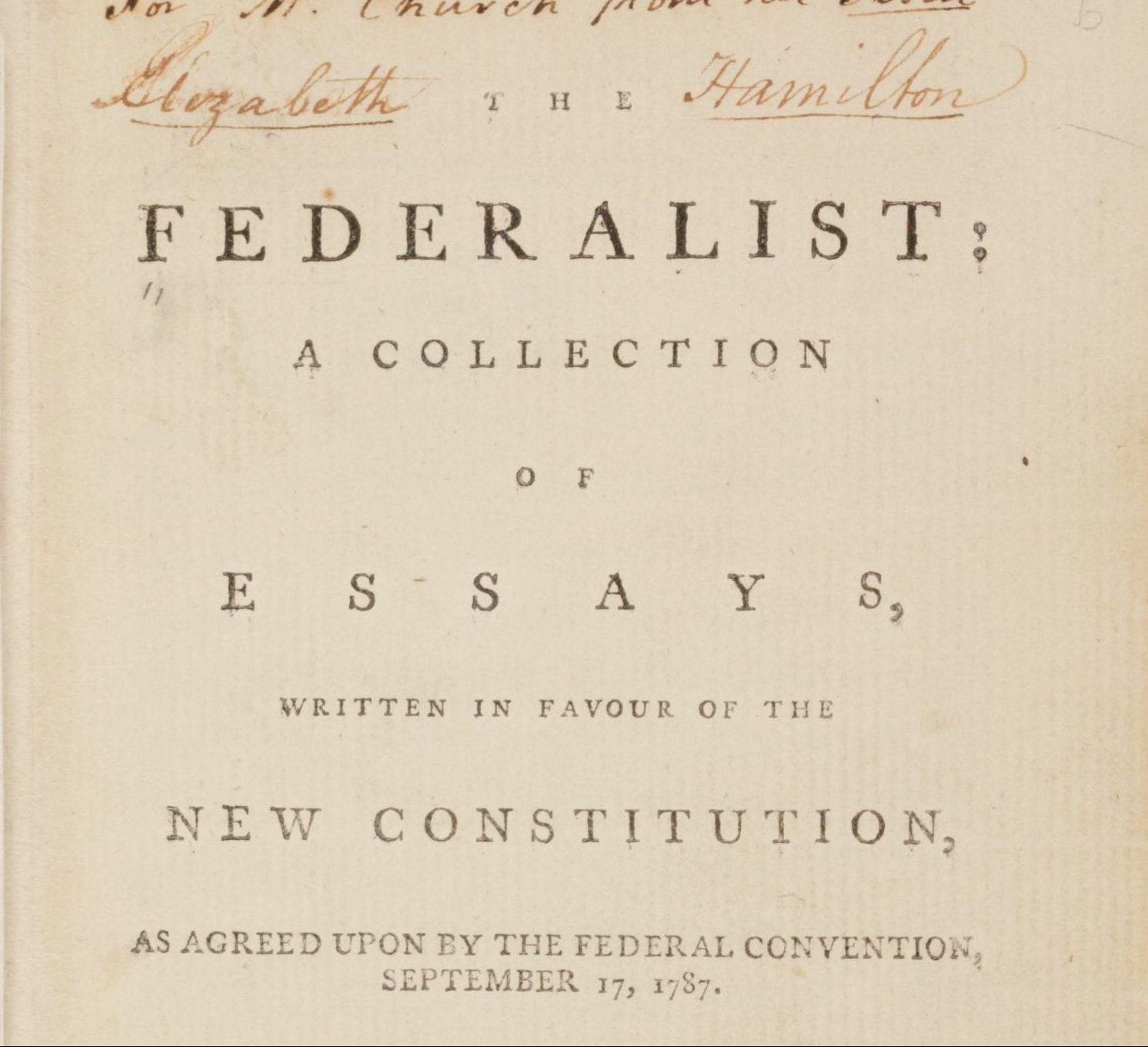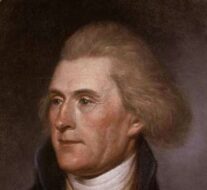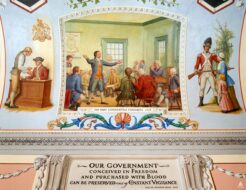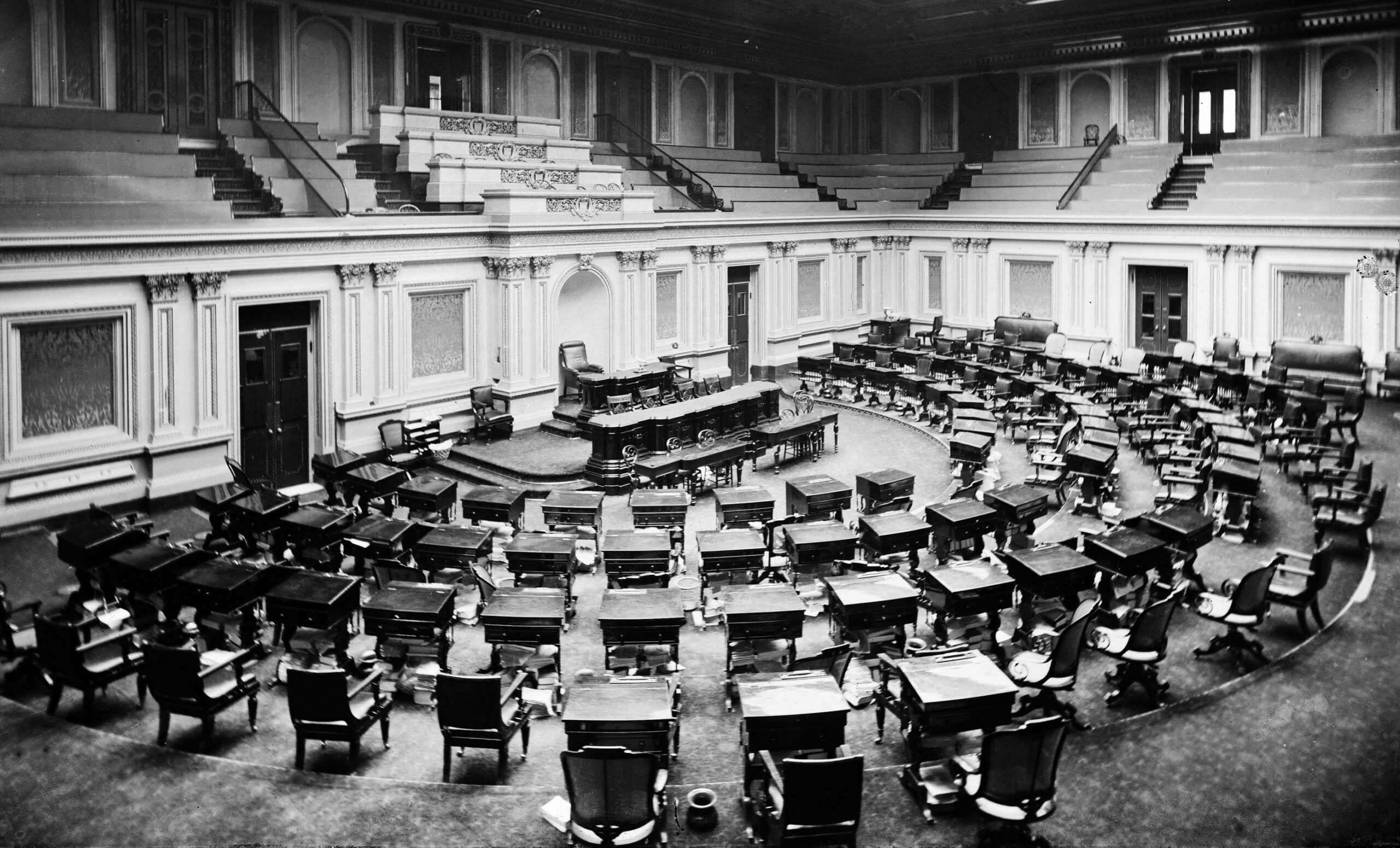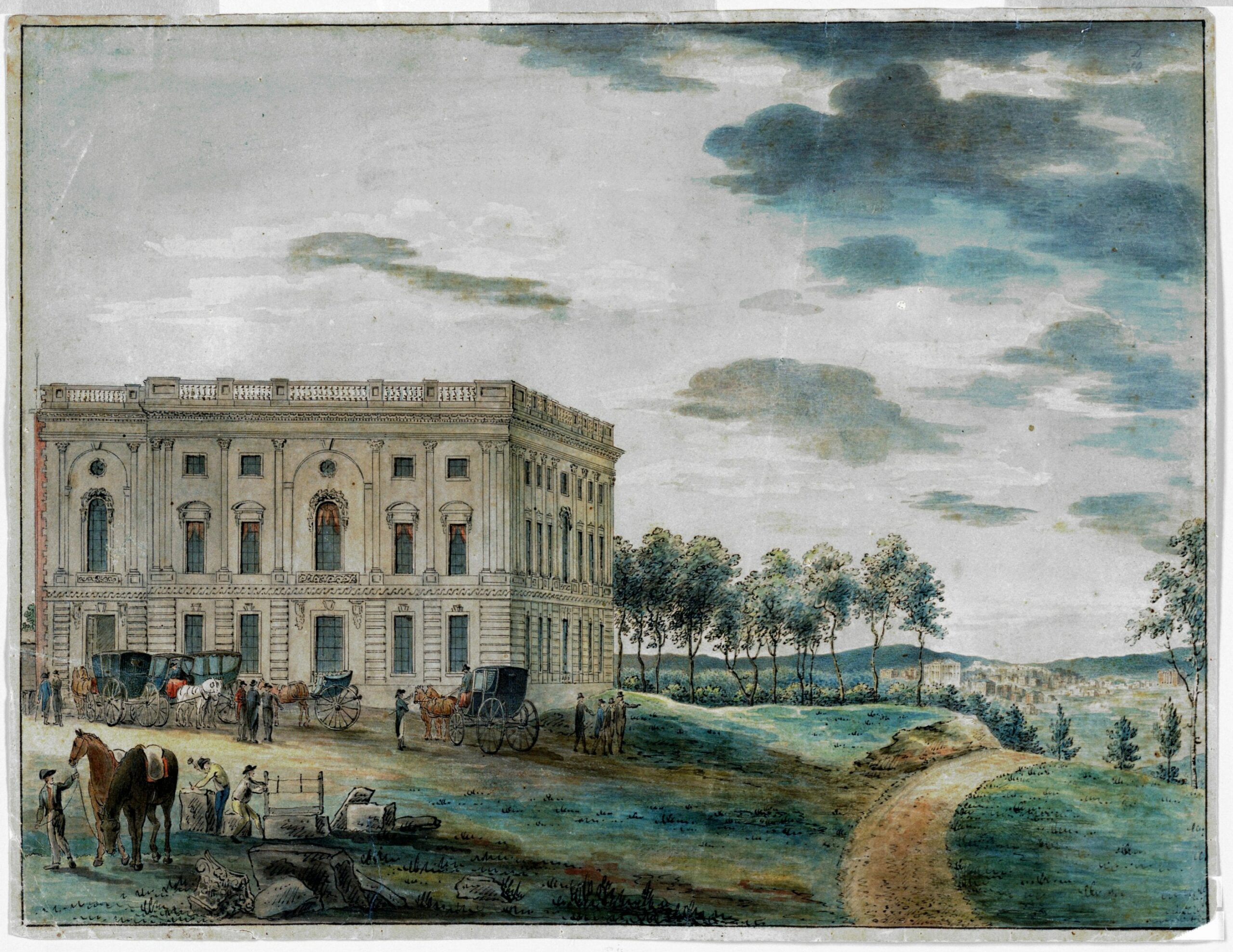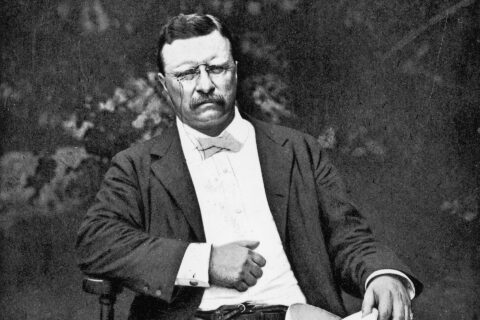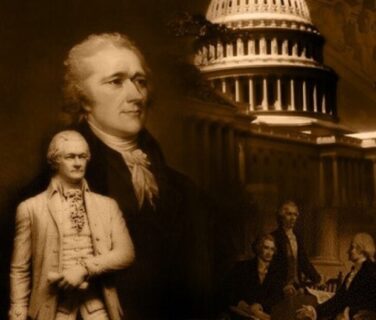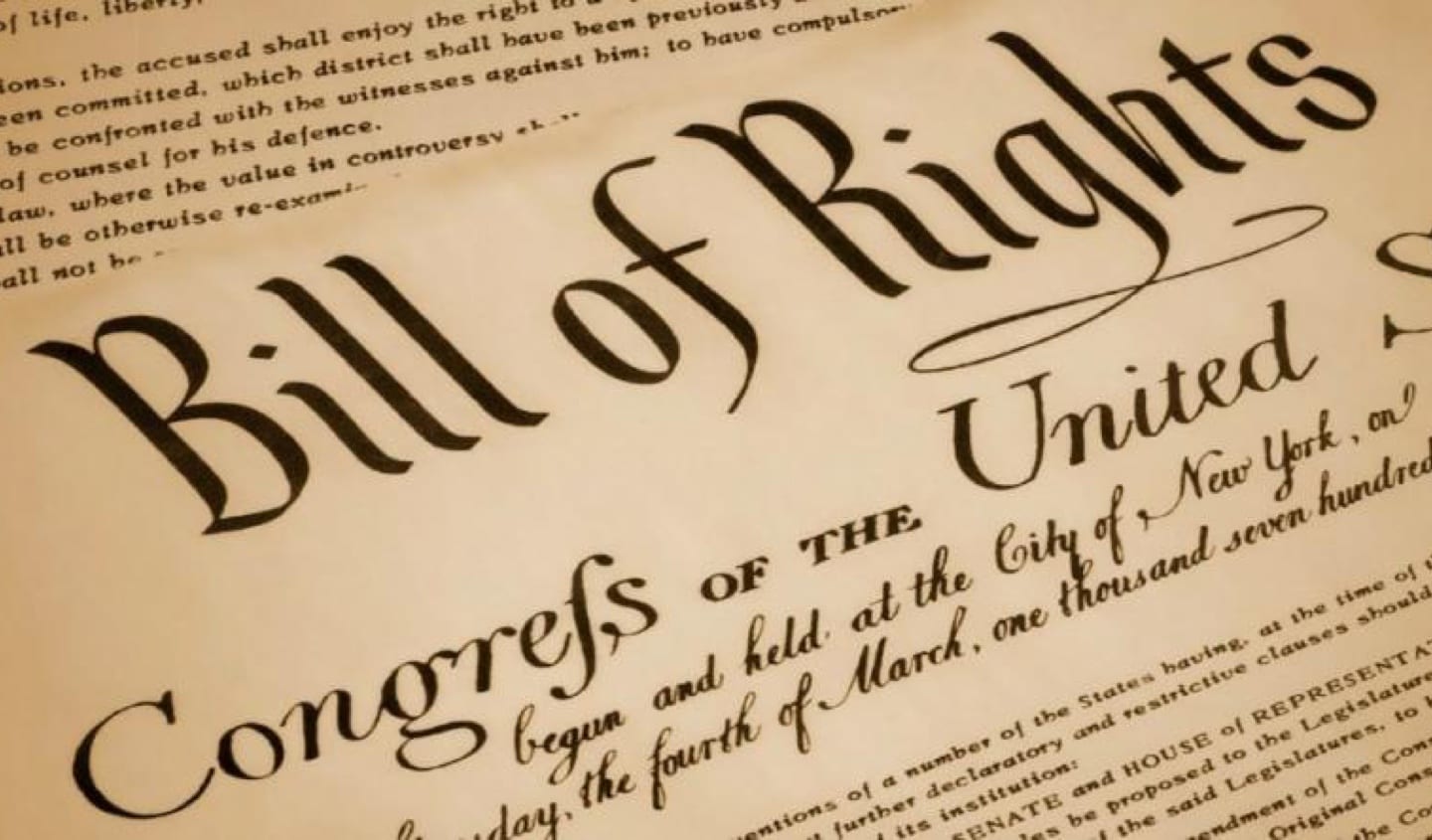
Bill of Rights
The adoption of the Bill of Rights was a mixture principle and politics. It did not just fall from the sky in one whole and intelligible form.
There is a strong temptation to consider the story of the U.S. Bill of Rights as part of a larger narrative that starts with Magna Carta in 1215 and continues into the twenty-first century with concerns about human rights across the globe, touching briefly on how Americans introduced and passed a bill of rights. The chronological focus of these twenty-six selections is narrower: the context is primarily between 1776 and 1791.
Thus the larger question of how the British and colonial heritage fits into the American story is covered only briefly (“Massachusetts Body of Liberties”(1641); “The Maryland Act”(1649)). Of considerable importance in this brief account is that the rights included in the “Massachusetts Body of Liberties” (1641) are, numerically, more significant than those found in Magna Carta (1215) and the English Bill of Rights (1689). And so too are the rights enumerated in the Maryland Toleration Acts. We include these two colonial documents to remind the reader that Americans were concerned about rights, especially religious rights, even before the founding era of 1776–1791. Three rights are unanimously represented in all the state constitutions: the right of conscience/free exercise of religion; the right to have one’s case heard by a local impartial jury; and the due process rights of the common law. The framers of the new state documents decided these last rights were no longer secure under the traditional governmental arrangements. We consider it significant that the new states declared themselves to be republican and that the purpose of a republican government was to secure rights.
Seven states attached a prefatory declaration of rights to the frame of government: Virginia (June 1776), Delaware (September 1776), Pennsylvania (September 1776), Maryland (November 1776), North Carolina (December 1776), Massachusetts (March 1780), and New Hampshire (June 1784). These declarations were, in effect, a preamble stating the purposes for which the people had chosen the particular form of government. There was a remarkable uniformity among the seven states with regard to the kinds of civil and criminal rights they sought to secure.
Four states decided not to preface their republican constitutions with a declaration of rights: New Jersey (July 1776), Georgia (February 1777), New York (April 1777), and South Carolina (March 1778). Nevertheless, each incorporated individual protections in their constitutions.
Virginia entered unfamiliar territory with the disestablishment of the Anglican Church in 1779. Nevertheless, there were two competing models to which legislators could turn. The Massachusetts model endorsed the establishment of the Christian Protestant religion and, to that end, the legislature was constitutionally mandated to tax inhabitants for the support of public religious instruction. The taxpayer, nevertheless, was free to name the specific religion that was to receive the assessment. On the other hand, the Pennsylvania model warned that such taxation threatened the right of an individual to the free exercise of religion. In December 1784, the Virginia Assembly considered an assessment bill, consistent with the Massachusetts model, that would financially support the propagation of Christianity as the state religion. James Madison objected. The author of a protest addressed to the Virginia Assembly (“Madison’s Memorial and Remonstrance”(1785)), Madison urged the legislators to reject the proposed legislation. In the process, Madison pushed the national conversation even further in the direction of individual free exercise of religion and away from community-endorsed religion. The practical manifestation of Madison’s efforts was the Virginia Assembly’s adoption in 1785 of Jefferson’s Statute of Religious Liberty introduced in 1779. The Virginia Senate passed the statute in January 1786. It is also important to note how these rights made their way into the Northwest Ordinance.
A year after the passage of the Virginia statute at the Constitutional Convention (May to September 1787), the first of George Mason’s ten objections to the Constitution began: “There is no declaration of rights” (“Objections at the Constitutional Convention”(1787)). In particular, “there is no declaration of any kind for preserving liberty of the press, the trial by jury in civil cases, nor against the danger of standing armies in times of peace.” Mason’s position was that a federal bill of rights was both imperative and valuable. He was concerned that Congress might abuse the supremacy and the necessary and proper clauses of the Constitution (Articles 6 and 1, section 8, respectively). The supremacy clause made federal laws “paramount to the laws and constitutions of the several states.” Thus, “the declaration of rights, in the separate states, are of no security.” The necessary and proper clause enabled Congress to “grant monopolies in trade and commerce, constitute new crimes, inflict unusual and severe punishments, and extend their power as far as they should think proper.”
Throughout the nine-month ratification campaign, proponents of the Constitution defended the absence of a bill of rights. James Wilson’s State House Speech (“Wilson’s State House Speech”(1787)), delivered in Philadelphia three weeks after the Constitutional Convention adjourned, articulated what came to be known as the Federalist position: a bill of rights is unnecessary and dangerous. Wilson argued that at the state level, a bill of rights was necessary and salutary because “everything which is not reserved, is given,” but “superfluous and absurd” at the federal level because “everything which is not given, is reserved.” Wilson’s speech became the foil for the Antifederalist opposition literature in the fall of 1787 (“The Federal Farmer IV” (1787); “Lee to Randolph” (1787); “An Old Whig IV” (1787); “Brutus II” (1787); “The Dissent of the Minority of the Convention” (1787)). Near the end of the ratification campaign, Federalist 84 (See here.) repeated Wilson’s insistence that a republican form of government had no need for a bill of rights because such bills “are, in their origin, stipulations between kings and their subjects, abridgments of prerogative in favor of privilege, reservations of rights not surrendered to the prince.”
By early January 1788, the ratifying conventions in Delaware (voting 30–0), Pennsylvania (46–23), New Jersey (38–0), Georgia (26–0), and Connecticut (128–40) had ratified the Constitution. The report issued by the twenty-three Pennsylvania opponents had a considerable impact on the subsequent campaign (“The Dissent of the Minority” (1787)). The report proposed two different kinds of amendments. On the one hand, the minority called for amendments that would re-establish the principles of the Articles of Confederation. These were unfriendly to the Constitution. On the other hand, they proposed that a declaration of rights be annexed to the Constitution. These were friendly amendments. What became drafts of the first, fourth, fifth, sixth, seventh, and eighth amendments to the Constitution were included in their list, although the origin of these amendments can be traced to colonial documents and state constitutions.
The fate of the Constitution was determined in the Massachusetts, New Hampshire, Virginia, and New York ratifying conventions in the first half of 1788. Antifederalist literature in the fall of 1787 had had an adverse effect on the campaign for ratification. A compromise—“ratify now, amend later”—was needed in each of these four states to secure ratification (“The Virginia Ratifying Convention” (1788); “The New York Ratifying Convention” (1788)). In Massachusetts, ten delegates switched their votes and a 187–168 majority ratified the Constitution. A switch of five votes ensured ratification in both New Hampshire (57–47) and Virginia (89–79). In New York, the Antifederalists outnumbered the Federalists by a margin of 46–19 going into the convention; but in the end, the Constitution was ratified by a vote of 30–27.
The Antifederalist opposition and friends of the Constitution made two different kinds of recommendations. First, some called for an alteration in the very structure and powers of the new federal government. Second, others sought to protect the rights of individuals with respect to the federal government. All nine of Massachusetts’s recommendations are of the first kind. New Hampshire was the first to add a brief declaration of the rights of citizens to the list of amendments. In Virginia and New York, the two kinds of amendments were explicitly separated.
With the ratification of the Constitution, James Madison (1751–1836), who had done so much to bring it into existence,[1] supported the adoption of a bill of rights, while objecting to amendments that would radically alter the new government’s structure and power (“Madison Argues for a Bill of Rights” (1789)). He did so for both theoretical and prudential reasons. Madison distanced himself from Wilson’s argument that a bill of rights might be dangerous as well as unnecessary. He overcame the danger of listing rights—the list might be seen as definitive and thus limit the rights of citizens rather than protect them—by declaring that the enumeration “of certain rights, shall not be construed to deny or disparage others retained by the people.” This eventually became the Ninth Amendment and is a wholly Madison contribution. The prudential reasons included conciliating “honorable and patriotic” opponents who wanted to “revise” the Constitution by including a bill of rights and defeating the call for a second convention that would “abolish” the Constitution (“Madison to Jefferson” (1788)). He saw the First Congress as the “proper mode” to accomplish the objective of revision. What joined together the theoretical and prudential reasons was that Madison did not want a second convention to take place.
The correspondence between Madison in the United States and Thomas Jefferson in Paris is a critical part of the story of the adoption of the Bill of Rights, from the signing of the Constitution through the ratification campaign and into the First Congress (“Jefferson to Madison”(1787); “Jefferson to Madison”(1788); “Madison to Jefferson” (1788)). In his October 24, 1788 letter, Madison summarized the political and ethical problem that was to be solved by the Constitution: “To prevent instability and injustice in the legislation of the states.” What Madison was able to achieve, he explained to Jefferson, was the creation of an extended republic that would secure the civil and religious rights of individuals from the danger of majority faction. Jefferson responded favorably toward the proposed Constitution two months later. He was troubled, however, by Wilson’s argument that a bill of rights was unnecessary. He reminded Madison that “a bill of rights is what the people are entitled to against every government on earth, general or particular; and what no just government should refuse, or rest on inference.” He listed six essential rights that should be declared: “freedom of religion, freedom of the press, protection against standing armies, restriction of monopolies, the eternal and unremitting force of the habeas corpus laws, and trials by jury in all matters.” Jefferson reiterated the importance of including his list of six rights upon being informed by Madison that the Constitution had been adopted.
In his first Inaugural Address (April 30, 1789), George Washington addressed only two particular issues: his compensation, which he declined, and Congress’ “exercise of the occasional power delegated by the fifth article of the Constitution,” the power to amend the Constitution. He asked that “whilst you carefully avoid every alteration which might endanger the benefits of an united and effective government, a reverence for the characteristic rights of freemen will sufficiently influence your deliberations on the question, how far the former can be impregnably fortified or the latter be safely and advantageously promoted.” Madison followed Washington’s recommendation of proposing a bill of rights that, at the same time, did not alter the work of the Constitutional Convention. That became Madison’s challenge in the First Congress (“Madison Argues for a Bill of Rights” (1789)).
The House of Representatives debate on Madison’s propositions is not without irony (“The House Version” (1789)). Roger Sherman, arguably Madison’s leading and most persuasive opponent during the structural phase of the 1787 Philadelphia Convention, objected to Madison’s attempt to incorporate the bill of right additions “neatly” within the body of the Constitution. If the revisions are added as “supplements,” or amendments to the Constitution, argued Madison, “they will create unfavorable comparison” with the original Constitution. Sherman, however, prevailed. The original work of the framers, he argued, should remain intact. Moreover, Sherman urged his colleagues to reject incorporating the Declaration of Independence into the Preamble: “The words ‘We the people,’ in the original Constitution, are as copious and expressive as possible; any addition will only drag out the sentence without illuminating it.” On the other hand, Sherman proved to be an important ally in defeating the attempts of the South Carolina delegation to introduce amendments that would “change the principles of the government.” The Senate reduced the number of amendment proposals from seventeen to twelve. In doing so, the Senate defeated Madison’s House-backed proposal to protect freedom of conscience and the press at the state and national levels, restricting the protection to the national level only. The Senate also combined the protection of conscience and the press into one amendment (“The Senate Version” (1789)). The Senate version was adopted, with slight revision, by the whole Congress and submitted as twelve amendments to the states for approval (“Congress Sends Twelve Amendments” (1789)). Ten were ratified by three-fourths of the state legislatures (“Amendments I-X: The Bill of Rights” (1791)).
Very important from Madison’s perspective, Richard Henry Lee and William Grayson—both radical Antifederalists and the only Antifederalists in the United States Senate—were totally unsuccessful in their effort to move the power and structure of the Constitution back in the direction of the Articles of Confederation. They preferred this to adopting a bill of rights that would reinforce the idea that the Constitution was a limiting as well as an empowering document.
For his part, Madison was less than completely successful with his bill of rights proposals. Few members shared Madison’s urgent feeling that friendly alterations must be sent to the states by the end of the first session. The rights did not end up located in the Constitution where he wanted them to be. The number of rights was reduced from Madison’s original list (“Madison Argues for a Bill of Rights” (1789)) and several clauses, the religion clauses in particular, underwent close scrutiny and major alteration. Madison’s attempt to have the states as well as the nation restrained in the area of conscience, press, and jury was defeated in the Senate. The Bill of Rights, as adopted, applied only to the federal government. So the appellation “Father of the Bill of Rights” ought to be cautiously used. Yet it is certainly true that Madison’s persistence was critical to twelve amendments being sent to the states for adoption by the end of the first session and, not coincidentally, for the subsequent adoption of the original Constitution by North Carolina and Rhode Island.
The adoption of the Bill of Rights was a mixture principle and politics.[2] It did not just fall from the sky in one whole and intelligible form. True, the Bill of Rights incorporated much of the English common law and the colonial due process tradition, but it also shed much of this tradition’s feudal and monarchical features. Also, Americans between 1776 and 1791 appealed beyond their traditions to support freedom of conscience, free speech, and enhanced rights of due process of law.
Madison, known as “the Father of the Constitution,” is at the heart of our documentary account of the origin and politics of the Bill of Rights, from Virginia in 1776 to the First Congress in 1789. During this time, Madison’s position on the Bill of Rights changed, at least in part because of his relationship with Jefferson. To see the importance of this relationship, we must place it in the context of Virginia politics, which provide the bookends to the story of the Bill of Rights. George Mason wrote the Virginia Declaration of Rights in June 1776 (with Madison’s suggested alteration to the right of conscience clause). The Declaration of Rights was one influence on Jefferson as he wrote the Declaration of Independence. Mason also proposed to the Constitutional Convention that a bill of rights be adopted. Madison opposed Mason in the Convention on the issue. A few years later, in December 1791, Virginia finally adopted the Bill of Rights (1791), with Madison as the leader of those favoring adoption and Mason in opposition. Why did Virginia start the process, take the lead in the debates, and then delay so long to ratify the Bill of Rights? The answer is an irreconcilable divide among Antifederalists. There were those who wanted to change fundamentally the new American system and those who were friendly to the Constitution. The latter wanted to restrain the new government with a bill of rights. Between 1787 and 1791, Mason became one of those who wanted fundamental change, while Madison, always a friend to the Constitution, became one of those willing to amend it by adding a bill of rights. He made this change with the help of Jefferson (“Jefferson to Madison”(1787); “Jefferson to Madison” (1788); “Madison to Jefferson” (1788); “Madison Argues for a Bill of Rights” (1789)).
[1] See the companion volumes The American Founding: Core Documents (Ashland, Ohio: Ashbrook Press, 2017) and The Constitutional Convention: Core Documents (Ashland, Ohio: Ashbrook Press, 2018), both edited by Gordon Lloyd.
[2] James Madison to Richard Peters, August 19, 1789. This letter, organized around seven themes, is a model of principled leadership at its best; it joins that which is necessary with that which is proper.
The Colonial Heritage
A New and More Noble Course: Creating Republican Governments
- The Virginia Declaration of Rights and Constitution, June 12 and 29, 1776
- The New Jersey Constitution, July 3, 1776
- The Pennsylvania Declaration of Rights and Constitution, September 28, 1776
- The Massachusetts Declaration of Rights and Constitution, March 2, 1780
- James Madison’s Memorial and Remonstrance, June 20, 1785
- The Northwest Ordinance, July 3, 1787
The Bill of Rights and Ratification of the Constitution
- Objections at the Constitutional Convention, September 10, 12, 15, and 17, 1787
- James Wilson’s State House Speech, October 6, 1787
- The Federal Farmer IV, October 12, 1787
- Richard Henry Lee to Edmund Randolph, October 16, 1787
- An Old Whig IV, October 27, 1787
- Brutus II, November 1, 1787
- The Dissent of the Minority of the Convention of Pennsylvania, December 18, 1787
- Thomas Jefferson to James Madison, December 20, 1787
- The Virginia Ratifying Convention, June 24 – 27, 1787
- The New York Ratifying Convention, June 17 – July 25, 1788
- Federalist 84, July 16, 1788
- Thomas Jefferson to James Madison, July 31, 1788
The Bill of Rights and the First Congress
- Madison to Jefferson, October 17, 1788
- Representative Madison Argues for a Bill of Rights, June 8, 1789
- The House Version, July 28, August 13 –24, 1789
- The Senate Version, August 25 – September 9, 1789
- The Congress sends Twelve Amendments to the States, September 25, 1789
- Amendments I – X: The Bill of Rights, December 15, 1791
For each of the documents in this collection, we suggest below in section A questions relevant for that document alone and in section B questions that require comparison between documents.
1. The Massachusetts Body of Liberties, December 1641
A. What rights are protected in this colonial document? How are they protected?
B. What differences and similarities exist in the Massachusetts Body of Liberties and the early state constitutions as far as the type of rights are concerned? For example, does the Massachusetts Body of Liberties refer to freedom of conscience and freedom of the press? (See “The Virginia Declaration of Rights” (1776); “The Pennsylvania Declaration of Rights” (1776); and “The Massachusetts Declaration of Rights” (1780).)
2. The Maryland Act Concerning Religion, April 21, 1649
A. Does it strike you as odd that the Maryland Act can simultaneously proclaim the establishment of the Christian religion and the toleration of religion as central principles?
B. Compare the Maryland Act (1649) with the early state constitutions and Madison’s Memorial and Remonstrance (1785). (See “Virginia Declaration of Rights” (1776); “New Jersey Constitution” (1776); “Pennsylvania Declaration of Rights” (1776); “Massachusetts Declaration of Rights” (1780); “Madison’s Memorial and Remonstrance” (1785).)
3. Virginia Declaration of Rights and Constitution, June 12 and 29, 1776
A. Does it seem curious that a) the Virginia Declaration and the Virginia Constitution were written two weeks apart and that b) both preceded the passage of the Declaration of Independence? According to these two documents, what is the purpose of government? What is the role of the legislature, executive, and judiciary in the newly adopted Virginia Constitution? What sort of “republicanism” do these two documents express? Is it surprising that the Declaration of Rights precedes the Constitution?
B. By what authority was the Virginia Declaration of Rights and Constitution initiated and adopted? Compare and contrast the content of the Virginia Declaration of Rights with colonial and other state based documents. (See “Massachusetts Body of Liberties” (1641); “The Maryland Act” (1649); “New Jersey Constitution” (1776); and “Massachusetts Declaration of Rights” (1780).)
4. The New Jersey Constitution, July 3, 1776
A. New Jersey was the first state to incorporate a declaration of rights within the body of the constitution itself. Does it matter where the declaration is located in the constitution? What does the “New Jersey Constitution” (1776) have to say about religious rights?
B. What difference, if any, does it make if the declaration of rights is at the beginning or inserted into the document? Compare with the “Virginia Declaration of Rights and Constitution” (1776), the “Pennsylvania Declaration of Rights and Constitution” (1776), and the “Massachusetts Declaration of Rights and Constitution” (1780). Is it odd that both the Virginia and New Jersey declarations were written before the Declaration of Independence?
5. The Pennsylvania Declaration of Rights and Constitution (1776), September 28, 1776
A. To what extent does the Pennsylvania document embrace both the common law tradition and the new natural rights tradition?
B. John Adams judged that the Pennsylvania Bill of Rights “is taken almost verbatim from that of Virginia.” Is Adams correct? (See the “Virginia Declaration of Rights and Constitution” (1776).)
6. The Massachusetts Declaration of Rights and Constitution, March 2, 1780
A. How is it possible that the people have a right to require of the citizens to support, financially, the establishment of public religion? No one particular sect was given preference over another; all were “equally under the protection of the law” and, thus, the “free exercise” of religion was protected. Explain this explicit association between free exercise of religion and equality under the law.
B. Following Virginia and Pennsylvania, the need for “piety, justice, moderation, temperance, industry, and frugality” was listed in the Bill of Rights (1791). Are these six virtues compatible with the two religion clauses? (See the “Virginia Declaration of Rights and Constitution” (1776), the “Pennsylvania Declaration of Rights and Constitution” (1776), and James Madison’s “Memorial and Remonstrance Against Religious Assessments” (1785).)
7. James Madison’s Memorial And Remonstrance, June 20, 1785
A. How does Madison remind the legislators of 1783 that they were undermining the very principles of freedom of conscience that Virginians adopted in 1776?
B. Is Madison’s “Memorial and Remonstrance” out of touch with the religion clauses of the state constitutions? (See the “Virginia Declaration of Rights and Constitution” (1776), the “New Jersey Constitution” (1776), the “Pennsylvania Declaration of Rights and Constitution” (1776), and the “Massachusetts Declaration of Rights and Constitution” (1776).)
8. The Northwest Ordinance, July 13, 1787
A. What sort of country do the framers of the Northwest Ordinance envision for the next generation of Americans?
B. How do the statements on behalf of individual religious rights and the public support of religion compare with the statements found in the “Virginia Declaration of Rights and Constitution” (1776), the “New Jersey Constitution” (1776), the “Pennsylvania Declaration of Rights and Constitution” (1776), and the “Massachusetts Declaration of Rights and Constitution” (1776)?
9. Objections at the Constitutional Convention, September 10, 12, 15, and 17, 1787
A. Are there similarities among the objections to the Constitution listed by Edmund Randolph, Elbridge Gerry, and George Mason? Does their dissent demonstrate an admirable feature of the American experiment? Other delegates had reservations, yet they still signed.
B. Does it strike you as odd that Edmund Randolph, who introduced and defended the Virginia Plan, objected to signing the Constitution? How do these dissents on behalf of a bill of rights compare and contrast with earlier the documents in this collection? (See the “Virginia Declaration of Rights and Constitution” (1776), the “New Jersey Constitution” (1776), the “Pennsylvania Declaration of Rights and Constitution” (1776), the “Massachusetts Declaration of Rights and Constitution” (1776), and the “Memorial and Remonstrance Against Religious Assessments” (1785).)
10. James Wilson’s State House Speech, October 6, 1787
A. This speech by Wilson upset a lot of prominent opposition politicians and writers. What is so provocative about this speech?
B. What is the central argument of the Antifederalist opposition? (See The Federal Farmer IV (1787), “Letter to Edmund Randolph with Objections to the Constitution” (1787), An Old Whig IV (1787), and Brutus II (1787).)
11. The Federal Farmer IV, October 12, 1787
A. The Federal Farmer emphasizes the importance of a bill of rights right at the start of the ratifying campaign. What are his arguments in favor of a bill of rights?
B. What are the objections of the Federal Farmer to James Wilson’s State House speech? (See James Wilson’s “State House Speech” (1787), and Federalist 84 (1788).)
12. Richard Henry Lee to Edmund Randolph, October 16, 1787
A. What rights are essential to Richard Henry Lee? Why does the proposed Constitution contain the potentiality to make these rights vulnerable?
B. How do Lee’s essential rights compare with those revealed in the Thomas Jefferson–James Madison exchanges? (See Thomas Jefferson’s “Letter to James Madison” (1787) and “Letter to James Madison” (1788), James Madison’s “Letter to Thomas Jefferson” (1788), and “Representative Madison Argues for a Bill of Rights” (1789).)
13. An Old Whig IV, October 27, 1787
A. What are An Old Whig’s arguments on behalf of a small republic and a bill of rights?
B. Compare the Old Whig’s argument with the argument of Federalist 10 (1787). (See Federalist 84 (1788).) Is there a coherence to the Antifederalist argument? (See “Objections at the Constitutional Convention” (1787), The Federalist Farmer IV (1787), “Richard Henry Lee to Edmund Randolph” (1787), Brutus II (1787), and “The Dissent of the Minority of the Convention of Pennsylvania” (1787).)
14. Brutus II, November 1, 1787
A. Brutus makes the absence of the Bill of Rights a key issue in the ratification campaign. Does his argument make sense? What rights does Brutus deem “essential”?
B. Are there good reasons why James Wilson and The Federalist dismiss the absence of a bill of rights as a vital issue in the proposed Constitution? (See “James Wilson’s State House Speech” (1787), The Federalist Farmer (1787), “Richard Henry Lee to Edmund Randolph” (1787), and Federalist 84 (1788).)
15. The Dissent of the Minority of the Convention of Pennsylvania, December 18, 1787
A. What rights did the Pennsylvania Minority consider to be essential?
B. Compare the objections to the Constitution expressed by the Pennsylvania Minority to those raised at the Virginia and New York Ratifying Conventions. (See the “Virginia Ratifying Convention” (1788), and the “New York Ratifying Convention” (1788).)
16. Thomas Jefferson to James Madison, December 20, 1787
A. What are the six essential rights that Thomas Jefferson states should be included in a Declaration of Rights?
B. Why does Thomas Jefferson disagree with the approach taken by James Wilson in his State House Speech? Which of the six rights mentioned by Jefferson does James Madison endorse? (See James Wilson’s “State House Speech” (1787), “James Madison to Thomas Jefferson” (1788), and James Madison’s “Speech on Amendments to the Constitution” (1789).)
17. The Virginia Ratifying Convention, June 24–June 27, 1787
A. What is the difference between an adoption of the Constitution with previous amendments and adoption with subsequent amendments? Do previous amendments open the door to the possibility of secession? How does the discussion over how to adopt the Constitution enhance our understanding of what is and is not a republican and a federal government?
B. How do the amendment and bill of rights proposals compare and contrast with those listed in the New York ratifying document? (See the “New York Ratifying Convention” (1788).) Is James Madison’s argument against a bill of rights the same as that articulated by James Wilson? (See James Wilson’s “State House Speech” (1787).)
18. New York Ratifying Convention, June 17–July 25, 1788
A. What is the difference between the adoption of the Constitution with previous or conditional amendments and adoption with subsequent or recommended amendments? What are the differences between the content of the twenty-five items in the Bill of Rights proposed at the New York convention and the thirty-one items in the proposed amendments?
B. How do the amendment and bill of rights proposals compare and contrast with those listed in the Virginia ratifying document? (See the “Virginia Ratifying Convention” (1788).) How many of the amendment proposals and the Bill of Rights proposals make their way into the Bill of Rights adopted in 1791? (See “Amendments I-X: The Bill of Rights.”)
19. Federalist 84, July 16, 1788
A. What are the rights that Publius claims are listed in the proposed Constitution? Why does Publius think the Constitution is a bill of rights?
B. To what extent does Publius repeat, or enlarge upon, the arguments made by James Wilson in his State House speech? (See James Wilson’s “State House Speech.”)
20. Thomas Jefferson to James Madison, July 31, 1788
A. What rights does Thomas Jefferson think that the general voice of America is calling for?
B. Which of these rights does James Madison include in his proposals to Congress? (See James Madison’s “Speech on Amendments to the Constitution.” (1789).) How does Thomas Jefferson’s list of rights compare with those requested at the Virginia and New York Ratifying Conventions? (See the “Virginia Ratifying Convention” (1788).) Has his list expanded or contracted from those contained in Thomas Jefferson’s letter to James Madison?
21. James Madison to Thomas Jefferson, October 17, 1788
A. Why did James Madison not view the absence of a bill of rights from the proposed Constitution “in an important light”? How did Madison answer his own question: “What use then it may be asked can a bill of rights serve in popular governments”?
B. Compare James Madison’s less than enthusiastic support for a bill of rights with James Wilson’s State House Speech and Alexander Hamilton’s argument in Federalist 84. (See James Wilson’s “State House Speech” (1787) and Federalist 84 (1788).)
22. Speech on Amendments to the Constitution, June 8, 1789
A. What is James Madison’s case for the adoption of a bill of rights? Where would he place these thirty-nine constraints on the reach of the federal government? Before the Constitution? Within the Constitution? Or after the Constitution?
B. Compare James Madison’s case here for a bill of rights with his exchange with Thomas Jefferson, Did Madison flip-flop? Are there any surprises in his list of thirty-nine rights? Compare with “Thomas Jefferson to James Madison” (1787), “Thomas Jefferson to James Madison” (1788), and “James Madison to Thomas Jefferson” (1788).
23. The House Version, July 28, August 13–24, 1789
A. Why did the House reject James Madison’s proposal to incorporate the Bill of Rights into the main body of the original Constitution? What alterations did the House make to Madison’s version?
B. How is the House version similar to and different from Madison’s June 8 proposals? (See James Madison’s “Speech on Amendments to the Constitution” (1789).)
24. The Senate Version, August 25–September 9, 1789
A. Why do we know so little about the debates that took place in the Senate? What important contribution, if any, did the Senate make?
B. How is the Senate version similar to and different from the House version and James Madison’s June 8 version? (See James Madison’s “Speech on Amendments to the Constitution” (1789), and “The House Version” (1789).)
25. The Congress sends Twelve Amendments to the States, September 25, 1789
A. Are the changes in the religion clauses significant in the final Congress version?
B. What changes took place in the religion clauses over the course of the First Congress? (See James Madison’s “Speech on Amendments to the Constitution” (1789), “The House Version” (1789), and “The Senate Version” (1789).)
26. Amendments I–X: The Bill of Rights, December 15, 1789
A. To what extent is the Bill of Rights an individual rights, a group or associational rights, or a states rights document? Why are there ten rather than twelve or seventeen amendments?
B. Why does the Bill of Rights appear as amendments at the end of the Constitution rather than in the Preamble or in Article I, Section 9 of the Constitution? (See the “Virginia Declaration of Rights and Constitution” (1776), the “New Jersey Constitution” (1776), “The Dissent of the Minority of the Convention of Pennsylvania” (1787), the “Virginia Ratifying Convention” (1788), the “New York Ratifying Convention” (1788), James Madison’s “Speech on Amendments to the Constitution” (1789), and “The House Version” (1789).)
Banning, Lance. Jefferson and Madison. Madison, WI: Madison House, 1995.
Blackstone, William. Commentaries on the Laws of England. Oxford: Clarendon Press, 1765.
Bloom, Sol. History of the Formation of the Union Under the Constitution. Washington DC: Government Printing Office, 1943.
Cogan, Neil H., editor. The Complete Bill of Rights: The Drafts, Debates, Sources, and Origins. Oxford: Oxford University Press, 1997.
Commager, Henry Steele, editor. Documents of American History. New York: Appleton-Century-Crofts, 1968.
Conley, Patrick T, and John P. Kaminski, editors. The Bill of Rights and the States: The Colonial and Revolutionary origins of American Liberties. Madison, WI: Madison House, 1992.
Davis, G. R. C. Magna Carta. London: The Trustees of the British Museum, 1963.
Deane, Charles, editor. History of Plymouth Plantation by William Bradford. Boston: Privately Printed, 1856.
Ferling, John. A Leap in the Dark: The Struggle to Create the American Republic. Oxford: Oxford University Press, 2003.
Gales, Joseph, Sr., editor. Annals of Congress. Washington, DC: Government Printing Office, 1834.
Handlin, Oscar, and Mary Handlin, editors. The Popular Sources of Political Authority: Documents on the Massachusetts Constitution of 1780. Cambridge, MA: Belknap Press of Harvard University Press, 1966.
Hening, W. W. Statutes at Large. Richmond: George Cochran, 1823.
Hunt, Gaillard, editor. The Writings of James Madison. New York: G.P. Putman’s Sons, 1900–1910.
Hutchinson, et. al., editors. The Papers of James Madison. 19 volumes. Chicago: University of Chicago Press, 1967.
Jennings, Sir Ivan. Magna Carta and Its Influence in the World Today. London: Her Majesty’s Stationery, 1965.
Katz, Stanley N., editor. Commentaries on the Laws of England. Chicago: University of Chicago Press, 1979.
Kukla, Jon, editor. The Bill of Rights: A Lively Heritage. Richmond: Virginia State Library and Archives, 1987.
Kurland, Philip B., and Ralph Lerner, editors. The Founders’ Constitution. Five Volumes. Chicago: University of Chicago Press, 1987.
Labunski, Richard. James Madison and the Struggle for the Bill of Rights. Oxford: Oxford University Press, 2006.
Lloyd, Gordon, and Margie Lloyd, editors. The Essential Bill of Rights. Lanham, Maryland: University Press of America, 1998.
Maier, Pauline. American Scripture: Making of the Declaration of Independence. New York: Vintage, 1997.
Riemer, Neal. James Madison: Creating the American Constitution. Washington, DC: Congressional Quarterly Inc, 1986.
Rutland, Robert Allen, et. al., editors. The Papers of James Madison. Chicago: University of Chicago Press. 1975.
Rutland, Robert Allen. The Birth of the Bill of Rights, 1776–1791. Boston: Northeastern University Press, 1983.
Schechter, Stephen L., and Richard Bernstein, editors. The Contexts of the Bill of Rights. Albany, New York: New York State Commission on the Bicentennial of the Constitution, 1990.
Schwartz, Bernard, editor. The Roots of the Bill of Rights. Five Volumes. New York: Chelsea House Publishers, 1980.
Schwartz, Bernard. The Great Rights of Mankind: A History of the American Bill of Rights. Madison, WI: Madison House, 1992.
Swindler, William F., editor. Sources and Documents of United States Constitutions. Dobbs Ferry, NY: Oceana Publications, 1973.
Tansill, Charles. Documents Illustrative of the Formation of the Union of the United States. Washington, DC: Government Printing Office, 1927.
Thorpe, F.N., editor. The Federal and State Constitutions. Seven Volumes. Washington, DC: Government Printing Office, 1909.
Veit, Helen, Kenneth Bowling, and Charles Bangs Bickford, editors. Creating the Bill of Rights: The Documentary Record of the First Federal Congress. Baltimore: Johns Hopkins University Press, 1991.
Wood, Gordon S. The Creation of the American Republic, 1776-1787. New York: W. W. Norton & Sons, 1969.)

